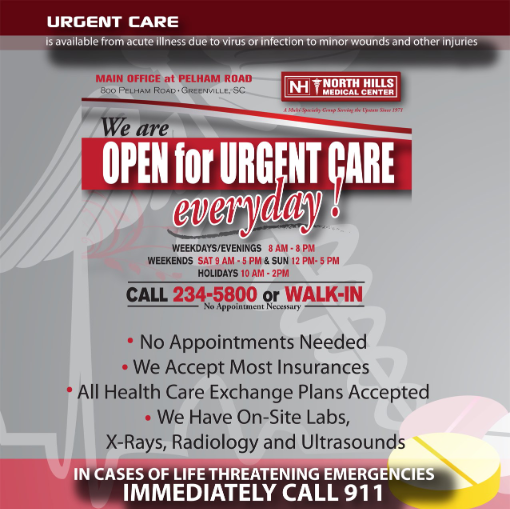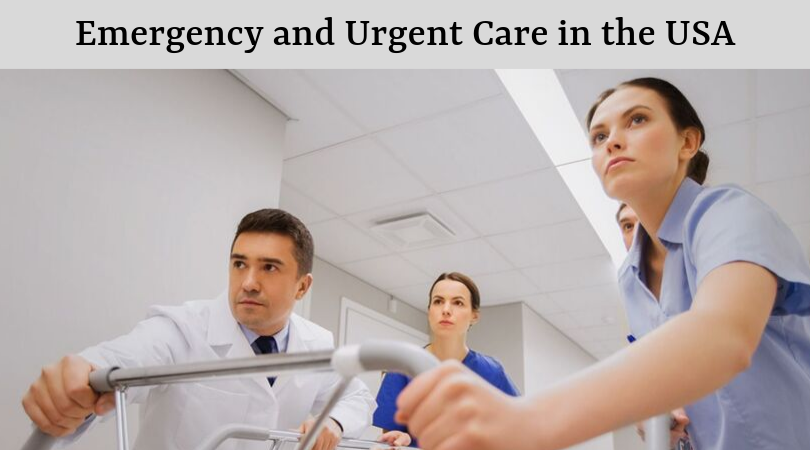Urgent Care

Urgent and Emergency Care System in the USA
To call an ambulance in the United States, it’s enough to deal “911”. The ambulance will quickly rush to the sick patient. Emergency medical services are provided mainly by private companies or municipalities.
The organization of the work of the American ambulance is fundamentally different from European. Doctors in Europe often respond to a call, not the most urgent occasion and should provide professional medical care at home. American doctors perform mainly transportation functions to stabilize the patient’s condition and quickly bring him to the nearest hospital for urgent care.
As a rule, there are no general practitioners or paramedics in the medical team. In the USA, a paramedic and a driver technician respond to the call. The tasks of the primary caregiver include the practical provision of basic medical care. The driver is responsible for managing the carriage, loading and unloading the stretcher with the patient. At the same time, he must undergo special training to work in the emergency system, receive the appropriate certificate and have a general perception of medicine.
Often licensed paramedics and medical equipment in remote and less populated areas work on a voluntary basis, often as part of fire brigades or emergency rescue services.
The total number of specialized medical vehicles in the United States exceeds 48,000. A total of 840,000 people is employed in the American emergency care system. Although there is no general federal standard time for doctors to arrive at the place of call in the United States, the reference is considered the ambulance should reach the patient within 8-12 minutes.
About a couple of weeks after delivery to the hospital, the patient will certainly receive a rather “huge” bill. Significant discounts are provided for older Americans, reaching up to 80 percent. But, for example, in Washington, the average cost of calling a medical team to a house and a trip to a stationary medical facility will be range from $400 to 700. In megapolises, you have to pay even more. So, in Chicago, the ambulance fee starts at $900 and you will have to pay extra money for the trip to the hospital. Each state has its own rate.
Tasks and duties
The tasks of emergency medical care include:
- emergency medical care at the prehospital stage in conditions threatening the life and health of the patient or those around him caused by sudden illnesses;
- exacerbations of chronic diseases;
- accidents;
- injuries and poisoning;
- pregnancy complications and childbirth;
- transportation of patients to inpatient healthcare facilities;
- participation in the elimination of the medical consequences of emergencies, accidents, disasters and natural disasters.
Emergency call categories
The emergency ambulance responds to the calls in the event of a patient’s sudden onset of diseases, conditions and (or) exacerbation of chronic diseases that threats to the patient’s life and (or) others requiring emergency medical intervention:
- allergy;
- crash;
- loss of consciousness;
- rash combined with high-temperature in children under 3 years of age;
- poisoning with chemicals or drugs;
- hanging, drowning;
- inappropriate behavior;
- a burn of any degree and depth in a child up to 3 years;
- extensive burn (several areas of the body);
- deep wounds;
- cramps;
- acute respiratory failure;
- accident with injured persons;
- electrical injury;
- fire.
Urgent care is associated with a sharp deterioration in the patient’s health when it is not possible to clarify the reasons for this:
- heart rhythm disturbance (arrhythmia);
- heart attack;
- asthma attack;
- injury;
- foreign body;
- bleeding (gastrointestinal, uterine, nasal);
- frostbite;
- childbirth;
- sudden impaired motor activity.





